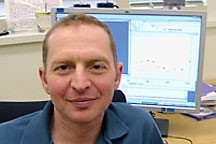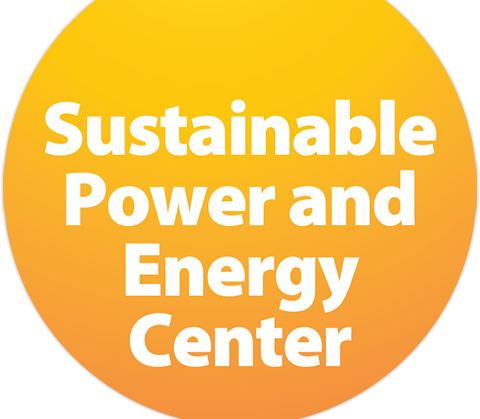Guest@MOF: Achieving Emergent Properties for Electronic and Energy Conversion Device Applications
Guest@MOF: Achieving Emergent Properties for Electronic and Energy Conversion Device Applications
Guest lecture
Alec Talin, Sandia National Laboratories
Date and time: Friday, August 14th, 11am
Venue: Cymer Conference room, Structural Materials Engineering (SME) at UC San Diego
Abstract
Metal-organic frameworks (MOFs) are extended, crystalline compounds consisting of metal ions interconnected by organic ligands, forming scaffolding-like structures that are sometimes referred to as “molecular tinker toys”. MOFs have attracted considerable attention for traditional applications of microporous materials, such as gas storage and separation. In many of these cases, however, the interactions between the guest molecules (CO2, H2, etc.) and the framework are weak and do not constitute a chemical bond. In my talk I will discuss a rather different concept of Guest@MOF, one in which the interaction between the framework and the guest goes beyond the relatively weak physisorption and results in a new material with unique properties stemming from the strong MOF-guest interactions. The idea of Guest@MOFs emerging as a new class of materials was stimulated by our discovery that infiltrating HKUST-1 pores with TCNQ (an insulator in its pure state) increases the electrical conductivity of the insulating MOF by over seven orders of magnitude (from <10-8 S cm-1 to ~ 0.1 S cm-1) [1]. This emergent property results from a donor-bridge-acceptor geometry, in which TCNQ binds to two Cu(II) dimer units within the MOF pore. I will describe the synthesis, chemical, and electrical characterization of TCNQ@ HKUST-1, as well as first-principles electronic structure calculations that indicate that conductivity occurs via a hopping mechanism facilitated by the bridging TCNQ. I will also discuss recent thermoelectric measurements which suggest that Guest@MOF materials may be useful in waste heat recovery applications [2].
[1] A. A. Talin, A. Centrone, A. Ford, M. E. Foster, V. Stavila, P. Haney, R. A. Kinney, V. Szalai, F. El Gabaly, H. P. Yoon, F. Léonard, M. D. Allendorf, “Tunable Electrical Conductivity in Metal-Organic Framework Thin Film Devices”, Science 343, 66 (2014).
[2] K. J. Erickson, F. Léonard, V. Stavila, M. E. Foster, C. D. Spataru, R. E. Jones, B. M. Foley, P. E. Hopkins, M. D. Allendorf, and A. A. Talin, “Thin Film Thermoelectric Metal–Organic Framework with High Seebeck Coefficient and Low Thermal Conductivity”, Adv. Mat. DOI: 10.1002/adma.201501078 (2015)
Alec Talin
Sandia National Laboratories, Livermore, CA
Alec Talin is a Distinguished Member of the Technical Staff at Sandia National Labs in Livermore, CA, an adjunct associate professor of Materials Science and Engineering at the University of Maryland College Park, and a Principal Founding Editor of MRS Communications. Prior to joining Sandia in 2002, Alec was a senior scientist and manager at Motorola Labs in Phoenix, AZ, and he spent three years as a Project Leader at the National Institute of Standards and Technology from 2009 to 2012. Alec received a BA in Chemistry from UCSD in 1989, and a Ph.D. in Materials Science and Engineering from UCLA in 1995. Alec has over 100 publications in refereed journals and holds 25 issued US patents. Alec currently leads a number of projects at Sandia in areas that include nanotechnology, energy storage, and national security.


